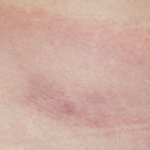NEW YORK (Reuters Health)—In Lyme-endemic areas, synovial fluid white blood cell (WBC) count isn’t very helpful in distinguishing septic from Lyme arthritis of the hip, a new study suggests.
Use of newer-generation Lyme disease diagnostics are necessary to avoid the “under- and overdiagnosis of Lyme arthritis at the time that initial management decisions must be made,” Dr. Lise Nigrovic from Boston Children’s Hospital and colleagues write in Pediatrics, online April 18.1
Surgical drainage is needed in patients with septic arthritis of the hip, but these patients can be hard to distinguish from patients with Lyme arthritis. And, until now, the ability of synovial fluid WBC counts to help discriminate between septic and Lyme arthritis of the hip has not been tested, the researchers say.
Dr. Nigrovic and colleagues took a look back at 238 patients aged 21 and younger with monoarticular hip arthritis and a synovial-fluid culture obtained at emergency departments in Lyme-endemic areas. Twenty-six (11%) had septic arthritis, 32 (13%) had Lyme arthritis and 180 (76%) had other arthritis.
The researchers defined septic arthritis as a positive synovial-fluid culture result or synovial-fluid pleocytosis (WBC count 50,000 cells/mcL or greater) and Lyme arthritis as positive two-tiered Lyme disease serology results and negative synovial-fluid bacterial culture results.
They found that patients with septic arthritis had higher median synovial-fluid WBC counts (126,130 cells/mcL) than patients with Lyme arthritis (53,955 cells/mcL) or other inflammatory arthritis.
Of note, say the researchers, more than half of patients with Lyme arthritis (18 patients, 56%) had synovial fluid WBC counts greater than or equal to 50,000 cells/mcL. Thirteen of 94 patients who underwent surgical drainage were later diagnosed with Lyme arthritis.
“Although septic arthritis of the hip is an orthopedic emergency requiring immediate operative intervention as well as parenteral antibiotics, patients with other types of hip arthritis, including Lyme arthritis and transient synovitis, do not require their potentially dangerous interventions,” Dr. Nigrovic and colleagues note in their article.
In this study, they say, “Commonly used synovial fluid WBC count cut-points resulted in the misclassification of a number of patients with Lyme arthritis while missing a few with septic arthritis. We suggest that clinicians should use more than just synovial fluid cell counts in isolation to decide whether to perform operative joint washout for patients with hip monoarthritis.”
“In Lyme endemic areas, a rapid and accurate diagnostic test for Lyme disease would reduce diagnostic confusion for clinicians who care for patients with hip effusions,” they add.
The study had no commercial funding and the authors have no relevant disclosures.
Reference
- Dart AH, Michelson KA, Aronson PL, et al. Hip synovial fluid cell counts in children from a lyme disease endemic area. Pediatrics. 2018 Apr 18. pii: e20173810. [Epub ahead of print]



